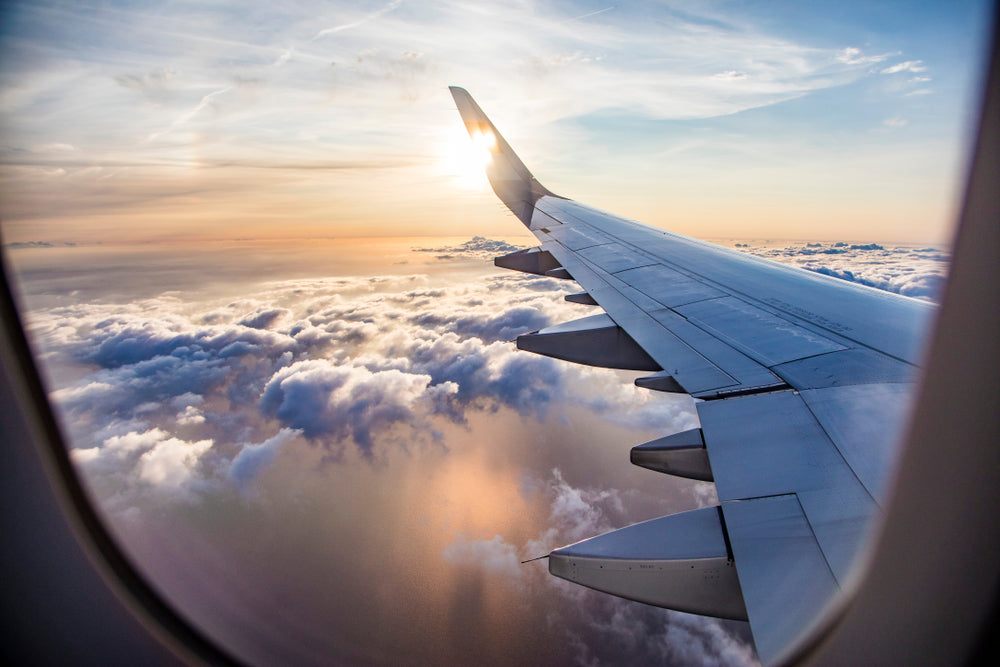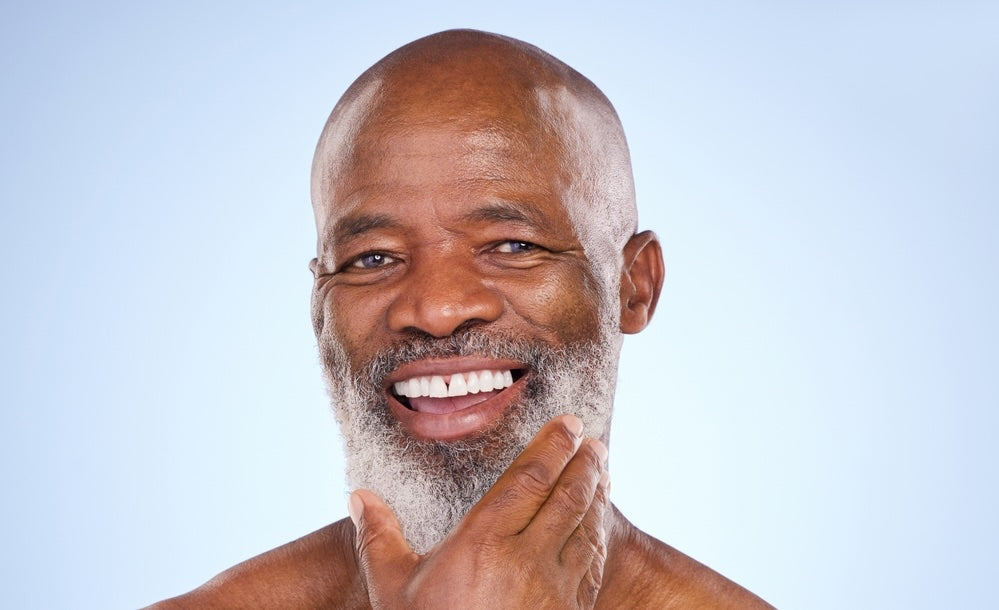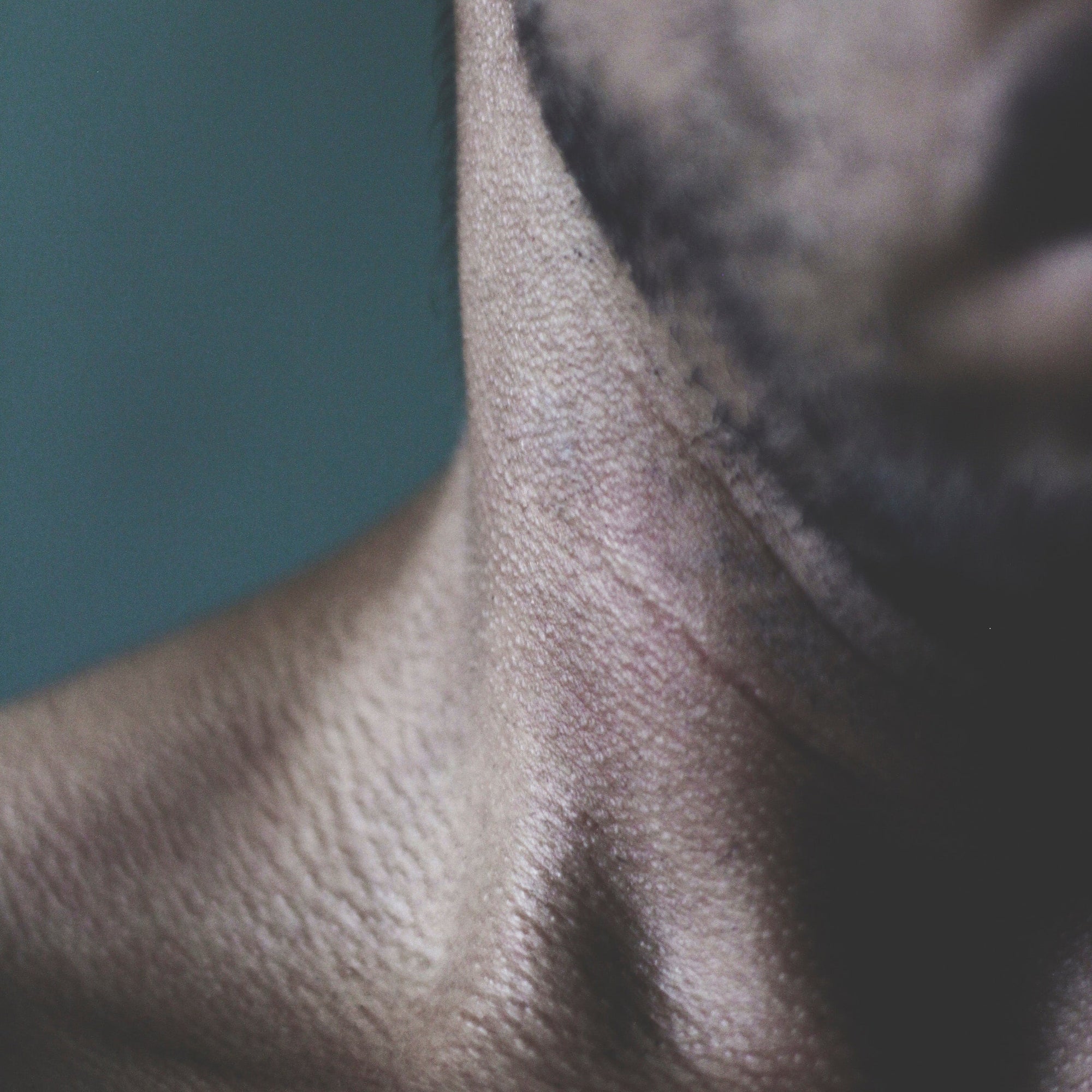12 essential in-flight skincare tips to make sure you arrive looking handsome and refreshed after a long haul flight
Whether you’re seated in first class or economy, airline travel can wreak havoc on your skin.
The combination of in-flight air conditioning, along with the jetlag when you land makes your skin dry, irritated and intensely dehydrated (and yet somehow, also, puffy).
And long travel days, coupled with stressful delays, only add to the toll on your complexion.
So what's the best way to counteract these and arrive at your destination looking your best?
Below, we’ve listed 12 essential travel grooming tips; simple, effective things you can do before, during and after your flight to make the experience of crossing time zones more bearable on your skin.
But first let’s look at why your skin reacts so badly at 36,000 feet:
-
DRY, DEHYDRATED SKIN
Humidity levels need to be between 40 and 70 per cent for your skin to be comfortable.
But according to the World Health Organisation the air in most pressurised cabins is only about 20 per cent humidity.
This reduction in humidity levels basically sucks everything good out of your skin — causing dehydration and dullness.
And the dehydration doesn't just affect your skin. Your eyes, nose, lips and cuticles aren’t immune from the effect either.
-
BREAKOUTS AND BLEMISHES
In dry conditions like these, your sebaceous glands can overcompensate, causing increased oil production.
When this happens to an already oily complexion, the excess sebum can easily lead to post-flight breakouts.
-
PUFFY, SWOLLEN SKIN
Dehydration also causes fluid retention. Which leads to puffy, swollen-looking skin - especially around your eyes.

Since no-one wants to get off an 11-hour flight looking like …. they’ve just got off an 11-hour flight, here are some simple steps you can take to fine tune your skincare routine for an overnight flight :
PRE-FLIGHT CHECK
In-flight skincare starts with some pre-emptive action before you leave for the airport:
- Moisturiser
- Lip balm
- Wash cloth
- a comfortable eye mask
- earplugs
- and/or noise reducing headphones
Best Hydrating Moisturizer for Smoother, Firmer Skin
As with all of our products, Otis Hydrating Daily Moisturiser was designed to be the perfect size for travel. At exactly 75ml/ 2.53oz it’s TSA proof and allowed in hand luggage, but also large enough for everyday use.
So there’s no need to worry about running out while you're away.
2: GET A GOOD NIGHT’S SLEEP
for tips on improving the quality of your sleep, plus some fail-safe ways to drift off when you’re having trouble sleeping before a flight.
3: PREP YOUR SKIN
A good pre-flight skincare routine goes a long way to minimise the effects of a long flight.
Exfoliate away dead skin cells and moisturise your skin thoroughly the night before your flight to ensure it's in the best possible condition before take-off.
Stay away from diuretics, such as alcohol and caffeine, to prevent your skin from losing moisture unnecessarily.

DURING THE FLIGHT
Not everybody is happy to slap in a hydrating sheet mask (although if you are, here is a list of the best face masks for flights). But there are lots of other effective (and more discreet!) ways to hydrate your skin on a flight so that you land looking fresh-faced.
The Number One most important thing you can do to keep your skin hydrated is to drink plenty of water. Cabin crew and other frequent flyers swear by drinking two litres of water before, during, and after long flights as a way to keep both skin and body fully hydrated.
So try avoiding them - and try to limit any salty airplane food too, as this only encourages water retention and puffiness.
Either way, you need to stay hydrated to compensate for the loss of roughly one cup of water for every hour you’re in the sky because of the dry air.
6: MOISTURISE: FACE, EYES, LIPS AND HANDS
Moisturising is vital to counteract the effect of the dry cabin air.
And if there's one ingredient to focus on in low-humidity conditions like these it's hyaluronic acid. It pulls in water to keep the skin well hydrated, and stops it from leaving as well. It’s the reason we’ve included it as one of the key ingredients in our Hydrating Daily Moisturiser.
Hyaluronic Acid works as a sort of moisture-magnet and also a protective shield to lock the moisture in for instant comfort, not to mention long-lasting hydration.
Hydrating Daily Moisturizer continues improving the hydration level of your skin for several hours so there’s no need to top it up during the flight. Just remember to re-apply before sleeping if you’re on a long haul flight.
And if you have oily skin, it’s vital to keep your skin well hydrated during the flight. This prevents your sebaceous glands from over compensating for the drying conditions in the cabin and prevents breakouts when flying.
LIPS - Your lips will have a tendency to feel drier and more chapped than normal on a flight, so have your favourite lip balm handy - and re-apply regularly to keep them soft.
7: REFRESH PUFFY EYES
The skin around your eyes is often the first to show strain mid-flight. When you’re dehydrated, tired or stressed (all probable on a long haul flight), the skin tissue near the eyes fills with fluid and becomes puffy.
The hyaluronic acid will stop your eyes from becoming dry and puffy and Vitamin E brightens so you look well-rested.
If you packed a fresh wash cloth in your carry-on, you can use it with some drinking water to clean and freshen your face. Applied cold it also helps relieve any puffiness.
8: SLEEP
Nothing beats beauty sleep.
Maybe no one ever got their best night of sleep on a plane, but try to doze off anyway— it helps keep your skin fresh and looking good upon arrival.
The best ways to make it easier to fall asleep on board:
- Noise-cancelling Headphones – the best ones will reduce unwanted background noise, so you can hear what you want to hear, and silence the rest.
-
Sleep mask - A comfortable sleep mask will also improve the quality of your sleep on a long flight.
Choose one that doesn’t press against your face.

UPON ARRIVAL
Conquering JET-LAG
Flight attendants are used to having to make a quick recovery after a long haul flight.
We asked a member of the Air France cabin crew for advice on the best steps to take to conquer jet-lag and take care of your skin on arrival:
Depending on the destination and your time of arrival, try to rest as much as you can immediately after a flight. It’s important to give your body the help it needs to recover.
Once you arrive try to spend time outside during the day, as daylight will regulate your biological clock.
Adjusting to local meals times will let your body acclimatise to the local time and environment. So try to eat lunch at lunchtime, etc, even if it feels like the middle of the night to you.
12: MOISTURISE AGAIN!
Always use a moisturiser on your face and body before sleeping and after your shower to counteract the dehydrating effect of the plane.
Follow these simple steps and you’ll arrive at your destination looking like a well-travelled pro.
Bon Voyage!
All you need to arrive looking handsome.
SHOP THE ROUTINE.
PRESTIGE SKINCARE FOR MEN.
MADE IN FRANCE.





